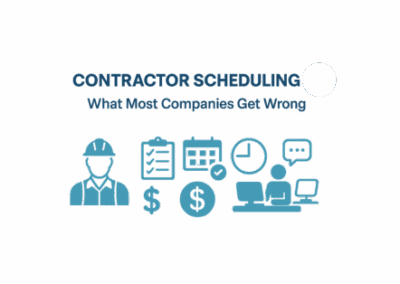The way companies deal with burnt out employees is changing for the better. Employee burnout is no longer a personal problem that breathing exercises and fruit deliveries in the office will solve. Companies are now taking action to help their burnt out employees.
Burnout is on the rise, with 79% of employees experiencing work-related stress in a monthly period according to APA’s 2021 Work and Well-being Survey. Your organization needs to start creating plans around employee burnout to combat the impact on your employees and business.
What is employee burnout?
The World Health Organization (WHO) officially recognizes burnout as an “occupational phenomenon”. They describe it as:
“a syndrome conceptualized as resulting from chronic workplace stress that has not been successfully managed. It is characterized by three dimensions:
- feelings of energy depletion or exhaustion;
- increased mental distance from one’s job, or feelings of negativism or cynicism related to one’s job; and
- reduced professional efficacy.
Combatting burnout is now in your hands rather than left up to employees to solve.
What is the impact of burnout?

According to the American Psychological Association, companies without strategies to help burnt out employees will experience absenteeism, high employee turnover, low productivity levels, and higher healthcare costs.
Did you know workplace stress is estimated to cost the US economy more than $500 billion each year?
The impact of burnout is huge and there is no silver bullet for solving it. We are listing out some simple steps your organization can take to make an impact.
How can you help burnt out employees?
Look for the signs
Managers should keep an eye open for signs of burnout among their employees. These signs can look like loss of motivation, social withdrawal, and loss of enthusiasm for their job. A usually happy and engaged employee who starts showing signs should be taken aside and asked what support they need from the company.
You may need to reassess their workload and see if there are tasks you can offload from them. Can you redistribute their work to colleagues? Or maybe push back deadlines of non-priority items.
Promote a healthy work-life balance
Your company culture has a big impact on how employees behave in the workplace. If working till late every evening and weekend is a common practice then they will follow suit. Leaders within the business need to act as an example to promote a healthy work-life balance within the organization. Show your teams that you are taking time for breaks, exercise, and self-care. How does your company promote a positive work-life balance? Do they allow employees to have flexible schedules? Or do they close early during holidays to allow employees to spend more time with families? These are all really important to how employees behave in the workplace and their opinion of work-life balance.
Flexible Scheduling
As mentioned above, flexible scheduling is an excellent way of helping your burnt out employees. Not everyone is productive within the usual 9-5 time block. It may help employees’ productivity if they can adapt their schedules according to their lifestyles. For example, they may want to start work a little later so they can drop their kids to school. Or start work earlier so they can finish earlier.
Introducing flexible shift scheduling options like self-scheduling and shift-bidding allows employees to select what shifts they want to work. Check out our other blog post on flexible scheduling here.
Respect employees’ time off
It goes without saying that you should always respect an employee’s time off. This means limiting or eliminating contact outside of work hours. Employees should only be obligated to respond to emails within their scheduled hours. Maybe all countries should follow in France’s footsteps with their 2016 law allowing employees the “right to disconnect”. Companies with more than 50 workers are obliged to set out the hours when staff are not supposed to send or answer emails.
Respecting employees’ time off can also look like not scheduling meetings during lunch hours to ensure everyone is getting a set rest period throughout the day. Encourage your team to use their vacation days. Giving employees this break from work is an essential part of reducing burnout.
Train Managers
Managers are the people that will be the first to notice employees showing signs of burnout. They are the ones who are setting tasks and deadlines. As a result, managers should have adequate training on how to keep employees engaged and motivated. A good manager can make all the difference in an employee’s work lifecycle. Managers are also responsible for rewarding and acknowledging their team’s hard work with promotions or other rewards. HR should look for patterns like high turnover within departments and take appropriate action and show management how to retain workers.
Create policies and strategies

There are many tools HR can implement to reduce the number of burnt out employees in the workplace. Start with an employee engagement survey to discover the root problem of your issues. This gives employees an opportunity to voice their opinion and gives HR direct solutions to problems.
You should also set out a proper time off policy that encompasses sick days and sick leave. Some companies give their employees a certain number of personal days that they can use as they wish. If employees suffer from burnout then should be able to take some time off to get better. Having a policy in place ensures everyone is on the same page and aware of the support they have from the organization.
To conclude…
Employee burnout is becoming more common than ever before. However, with a good leadership team in place who cares about the company culture and their employees’ lives, it can be reduced significantly. You should always put the well-being of your employees before getting a job done on time. Giving employees time for a good work-life balance will ultimately lead to happier and more productive employees in the long run.




